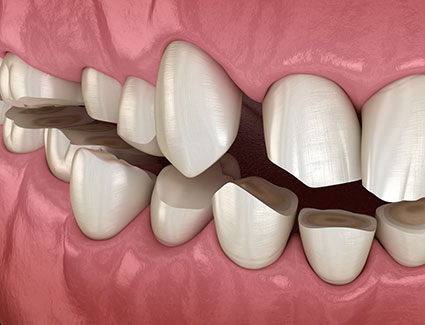
TMJ Therapy
At our practice, we offer the latest dentistry solutions in our modern and family friendly practice. Along with our general and cosmetic services, we also offer specialised dental care such as TMJ Therapy.
The temporomandibular joint or jaw joint is a bi-arthroidal hinge joint that allows the complex movements necessary for chewing. The TMJ is the joint between condylar head of the mandible and the mandibular fossa of the temporal bone.
Symptoms of TMJ Disorder
Some of the common symptoms of TMJ disorder include but not limited to:
- Pain or tenderness of your jaw
- Headaches
- Migraines
- Aching pain in and around your ear.
- Neck pain
- Difficulty chewing or pain while chewing.
- Aching facial pain.
- Trouble sleeping
- Locking or clenching of the jaw
Our highly skilled dentist will assess your TMJ, neck and jaw as well as discover what sort of symptoms you have. You may be making certain noises when opening and closing the mouth, or you might have pain on the side of the face. Once we have completed a thorough examination, we will recommend your best course of treatment. Depending on your case, each stage might need different approach with a different type of splint. Your dentist will explain everything to you at your appointment.
1. Early Stage
 During the early stages of TMJ disorder, there are no significant mechanical symptoms other than opening reciprocal clicking. At this early stage, there is no pain or limitation of motion, so you may not even know you’re having problems with your TMJ.
During the early stages of TMJ disorder, there are no significant mechanical symptoms other than opening reciprocal clicking. At this early stage, there is no pain or limitation of motion, so you may not even know you’re having problems with your TMJ.
You will also have excellent anatomic form and only a slight anterior displacement which we would identify at your appointment.
2. Early Intermediate Stage
During the second stage of TMJ Disorder, you may experience one or more episodes of pain and start to develop more severe mechanical problems consisting of loud clicking in your jaw and locking. The symptoms become more prominent and easier to identify at this stage.
3. Intermediate Stage
When a patient is at the third stage of TMJ disorder, they typically experience multiple episodes of pain, major mechanical symptoms consisting of jaw locking and restriction of motion.
We can also identify disk deformity with anterior displacement. During the intermediate stage of TMJ disorder, the symptoms are more uncomfortable and easily recognised. It is recommended you call to see us so we can work on treatment to get you feeling comfortable as soon as possible.
4. Late Intermediate Stage
During the late intermediate stage, you may feel a slight increase in severity in terms of pain. As well as an increase in jaw locking, clenching and restriction of motion. We also find the hard tissue starts to change and multiple adhesions form around the mouth and jaw.
5. Late Stage
The last stage of TMJ disorder consists of variable and episodic pain, chronic restriction of motion and difficulty with function. At this late stage, we can also identify gross degenerative changes of disk and hard tissues, multiple adhesions and osteophytosis. You may feel very uncomfortable and experience headaches and migraines. It’s important we see you right away to start treatment, so you can feel more comfortable and at ease.
Feel Better at Redfern Dentist
Contact us for a TMJ consultation with our friendly dentist. We will assess your TMJ and neck to ensure you are in good health. We will also discuss a tailored treatment plan to get you feeling comfortable again. Health funds accepted.
CONTACT US »
* Any surgical or invasive procedure carries risks. Before proceeding, you should seek a second opinion from an appropriately qualified health practitioner.

